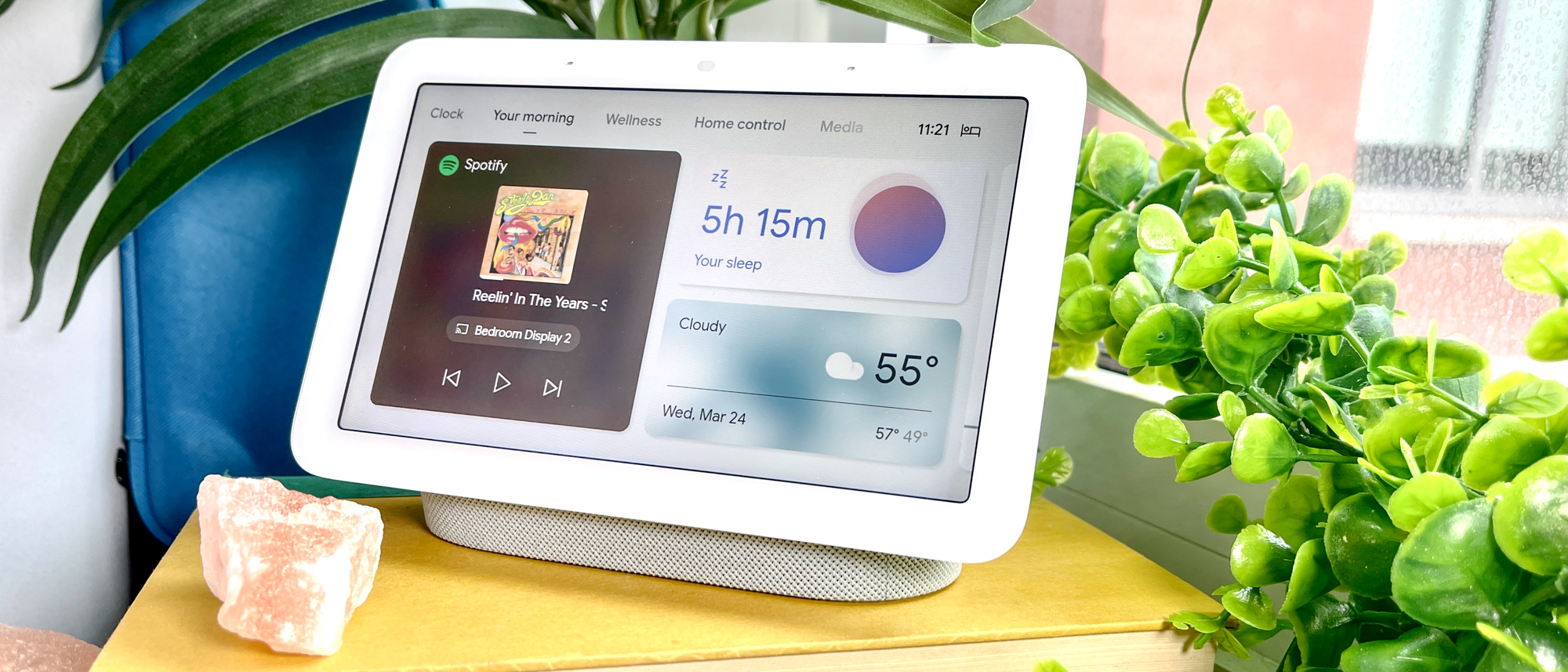Tom's Guide Verdict
The Google Nest Hub (2nd Gen)’s sleep sensing abilities, improved smart home UI and refreshed design and make it the best smart display for your bedside.
Pros
- +
Sleek design upgrades
- +
Actionable sleep data
- +
Speedy assistant responses
Cons
- -
Sleep sensing can be fickle
- -
Air gestures could work better
Why you can trust Tom's Guide
Size: 7 x 4.5 x 2.7-inch
Display: 7-inch 1024 x 600 pixels
Speakers: 1.7-inch tweeter
Camera: None
Wireless: 802.11a/b/g/n/ac WiFi, Zigbee, Bluetooth 5.0
The $99 Google Nest Hub (2nd Gen) isn't like any of the best smart displays you’ve seen before. Not only is it a speaker for music, screen for your Google Assistant needs and a communication center — but it tracks your sleep, too.
When positioned on your nightstand, the upgraded Google Nest Hub uses the Soli radar sensing chip to see how well (or not) you're sleeping at night. It's a little creepy, and also a little fickle, yet you might forget it’s there.
So what else is new? The Soli chip introduces air gesture controls, too, and there’s a new UI for managing the best Google Home compatible devices. As for sound, the Nest Hub earns a spot on our list of the best Google Home speakers, although audio feels like an afterthought compared to all the fresh tricks laid out in this Google Nest Hub (2nd Gen) review.
Google Nest Hub (2nd Gen) price and availability
The second-generation Nest Hub is available now and costs $99.99, which is $30 less than the first Google Nest Hub's starting price (back when it was called the Google Home Hub.) $99.99 is also the price of the Google Nest Audio, one of the best smart speakers to release in the last year.
This new smart display is more affordable than the larger Google Nest Hub Max, which starts at $229.99. But the Nest Hub Max offers features like a built-in camera that can keep you centered during video conferencing, plus a larger overall display.
Update: Google is reportedly working on a Google Nest Hub 3 that could be a smart display and tablet in one device, but there's no word on the release date.
Google Nest Hub (2nd Gen) review: Design
Like Google's previous smart displays, the second-generation Nest Hub looks like a 7-inch tablet perched on a fabric-covered oval stand. My Nest Hub Max completely towers over it.
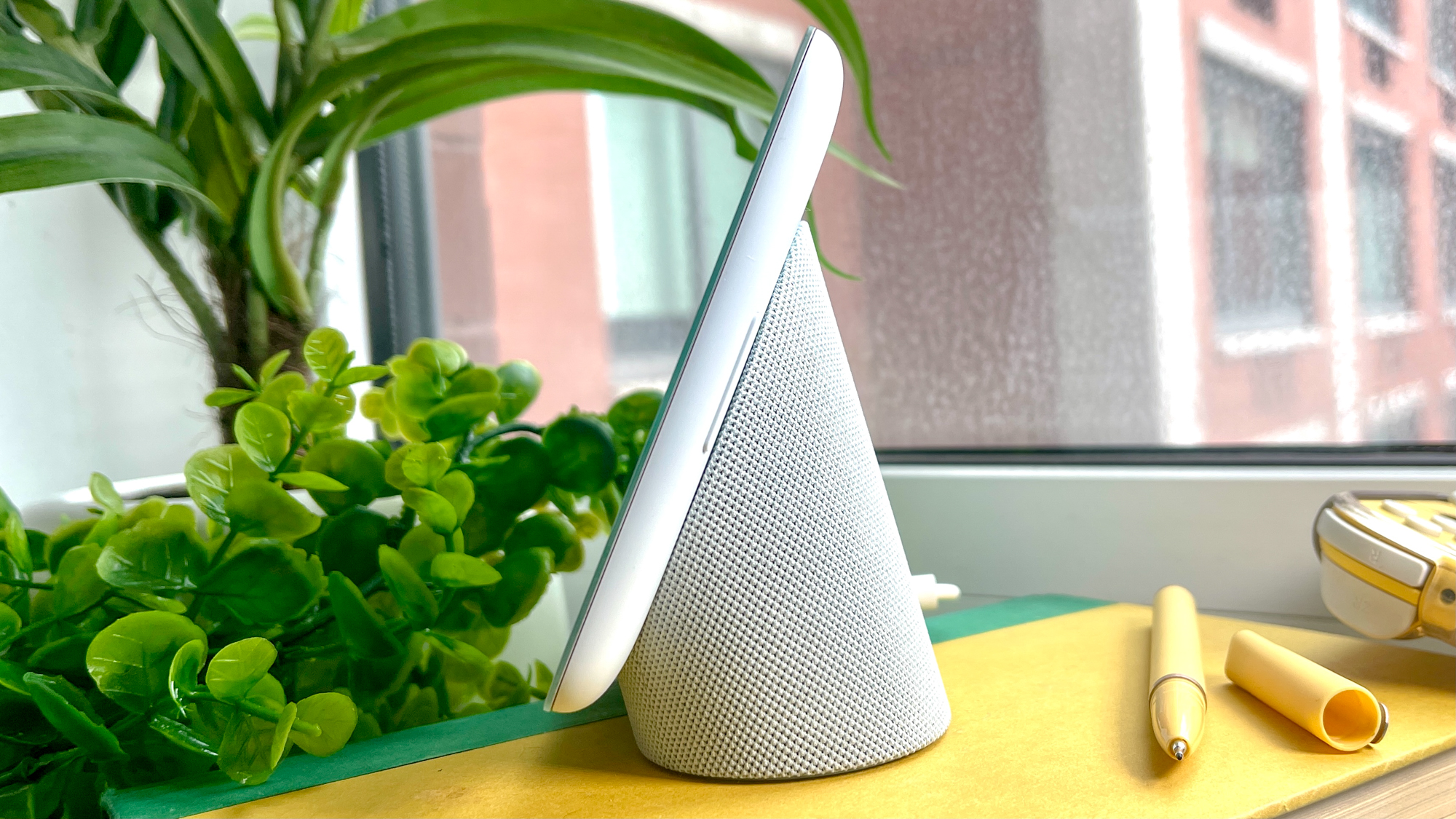
The new Nest Hub also comes in four colors: Chalk, Charcoal, Mist and Sand.
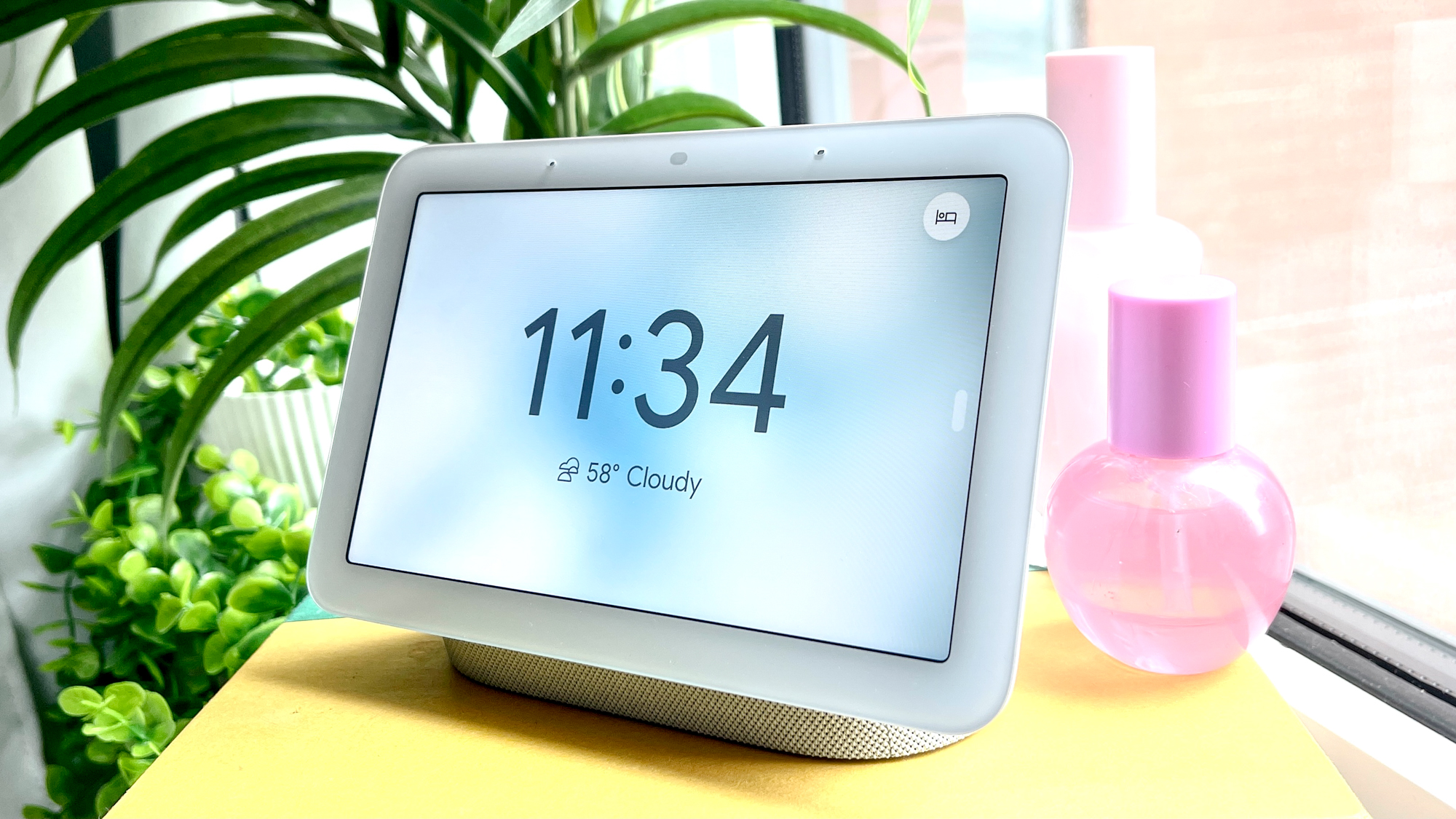
Though subtle, the new edgeless glass display looks more modern and should be easier to clean. It should provide a better experience when you use the Nest Hub as you would one of the best digital photo frames, too.
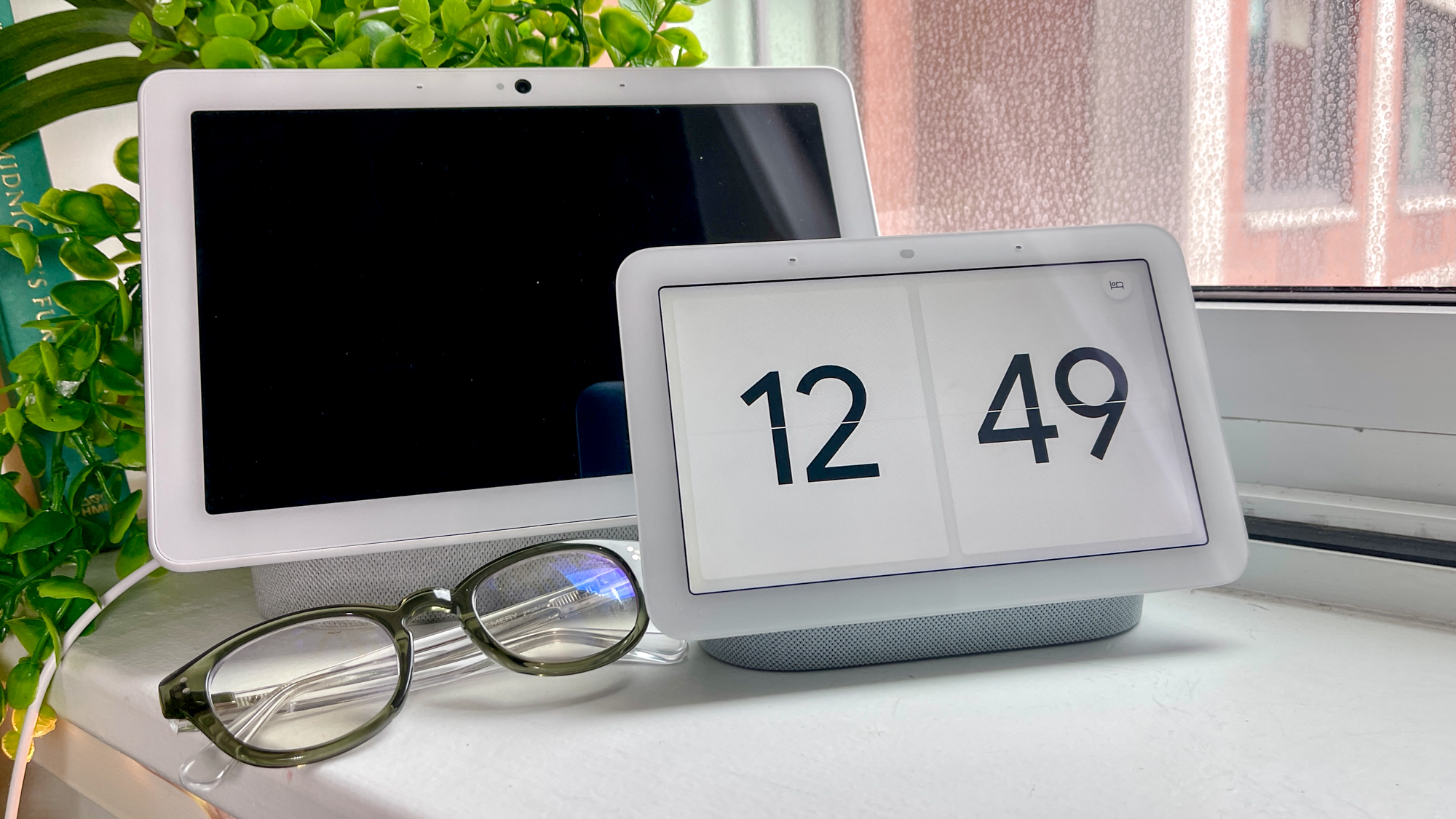
Once again, the display doesn't feature a camera like the Google Nest Hub Max or the similarly priced Amazon Echo Show 8. While that's a bummer for video chatting, it makes the Nest Hub an appealing choice in terms of privacy. Whether you want a camera on your counter or nightstand is a personal choice. Me? I usually grab my phone for video calls, so the Nest Hub’s lack of camera doesn’t bother me.
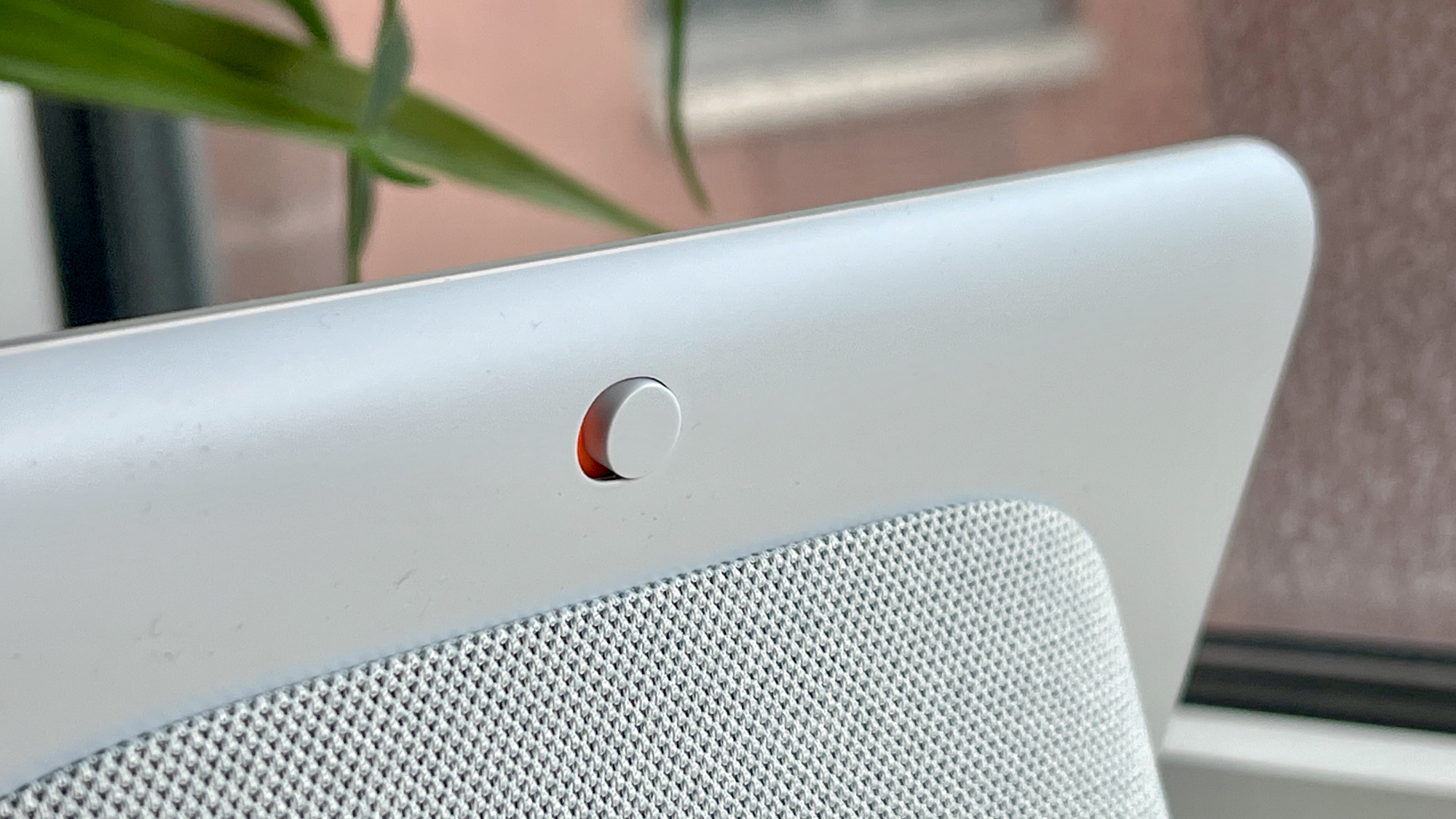
As most smart speakers and displays should, the Google Nest Hub 2 features a physical microphone switch on the back, so you can disable its microphones when you don’t want your assistant listening. However, you’ll need the microphone on if you want to use Google Assistant, as well as if you want to take full advantage of the device’s sleep sensing abilities.
Google Nest Hub (2nd Gen) review: Sleep sensing
Among the handful of upgrades Google introduced for its newest Nest Hub, sleep tracking (called sleep sensing) is the most noteworthy. While many of the best fitness trackers and best smartwatches can already track your sleep from your wrist, the Google Nest Hub follows your zzz's from your bedside, no skin contact necessary.
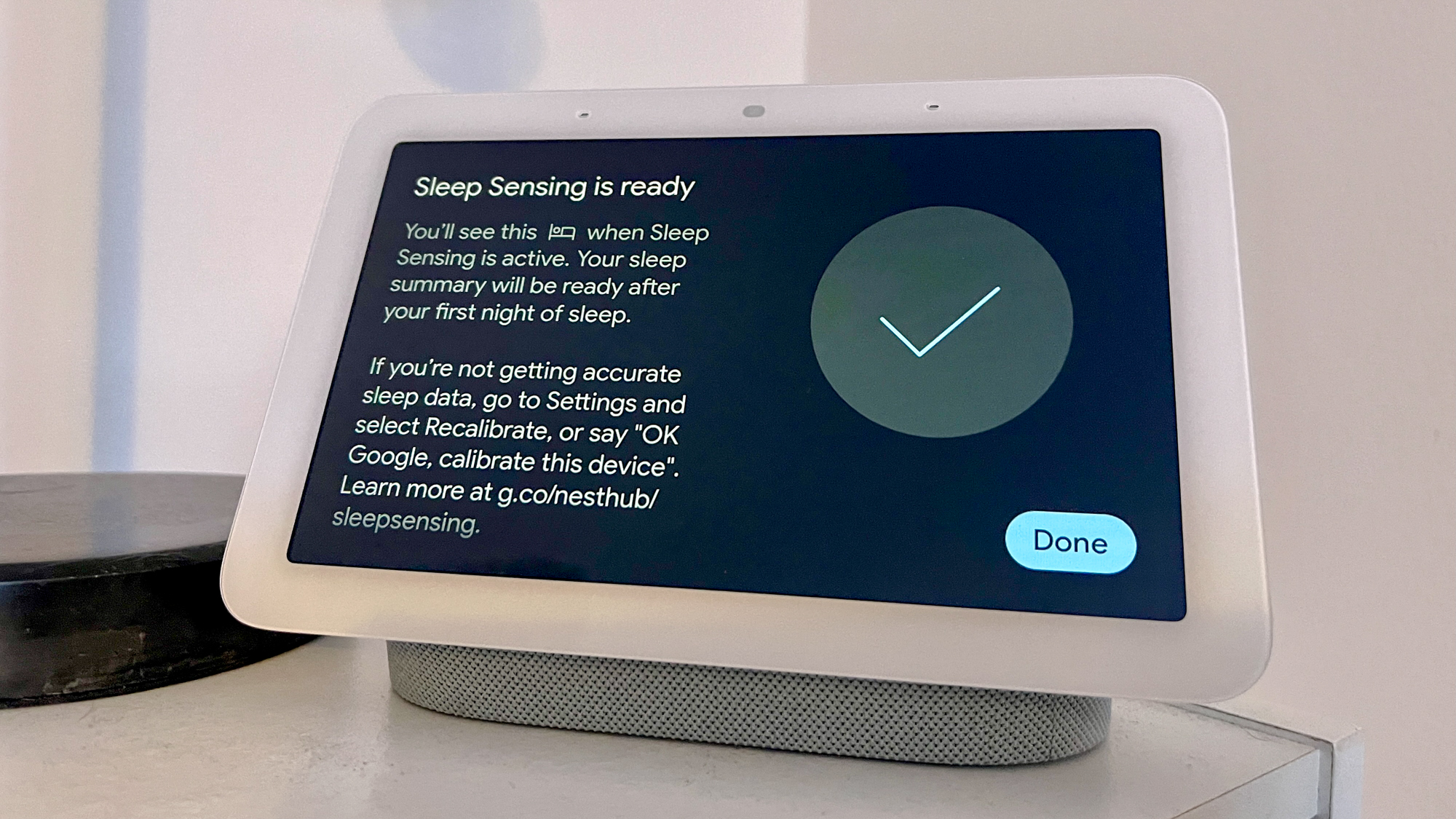
Instead, you calibrate the Soli sensor and the microphones to keep tabs on your individual movements and sounds throughout the night. The process took less than a minute for me, requiring a quick Google Fit integration and fake sleeping for a few seconds. Then, when I woke up, my display greeted me with an overview of my sleep, similarly to how Apple Health sends me a notification with my Apple Watch sleep tracking information each morning.
Google’s daily sleep sensing metrics included my sleep duration, schedule and quality in a timeline format. As my sleep profile grows, the Nest Hub will compare my consistency night-to-night to offer actionable advice based on the timeline of your overnight activity and guidelines from the American Academy of Sleep Medicine.
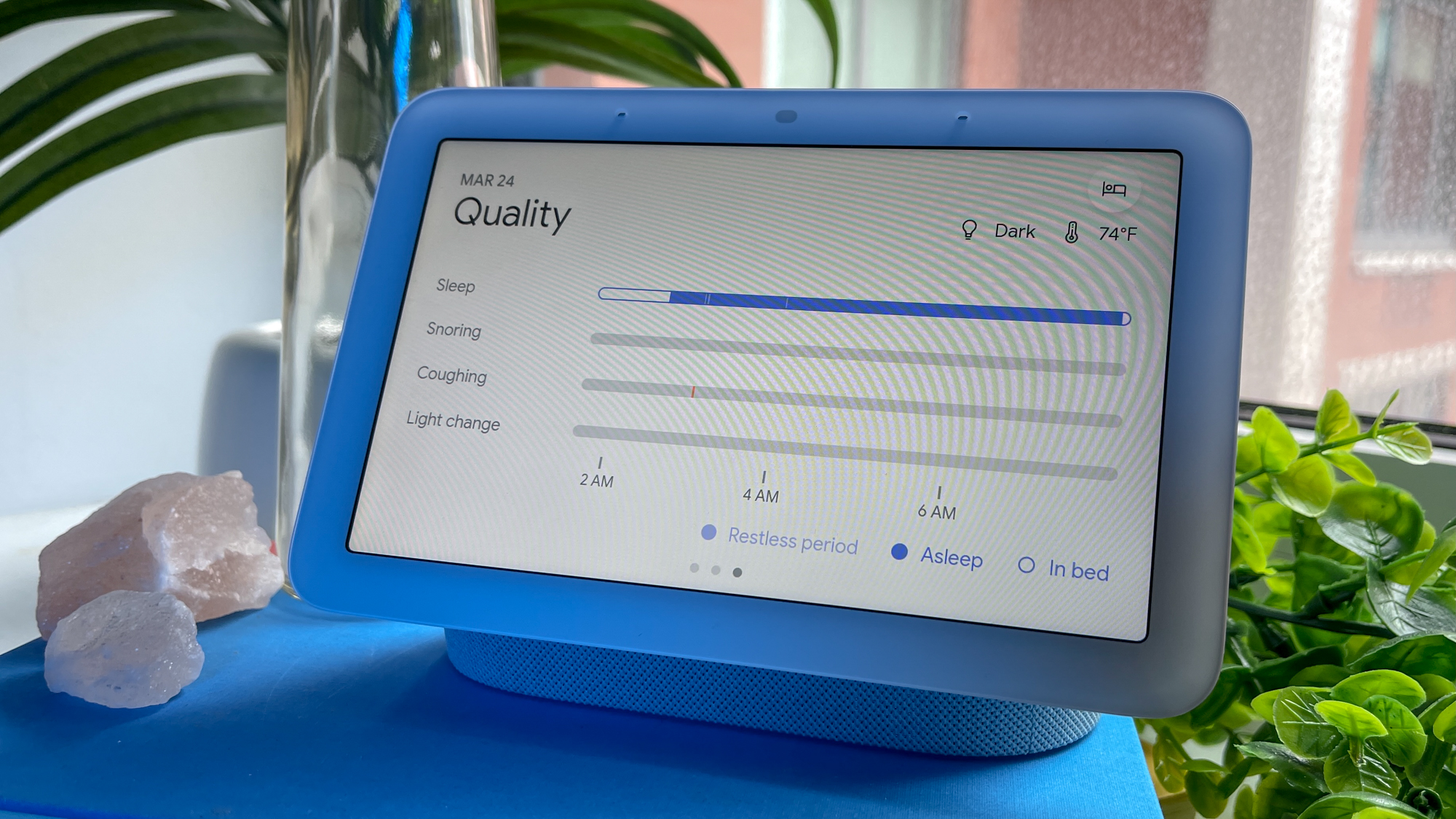
For example, if you cough frequently throughout the night, your Nest Hub might suggest it's allergen-related and recommend it's time to get new bedding. It can encourage certain environmental changes based on smart home devices, such as evening lighting, lower thermostat temperatures or ambient sounds, too. I had trouble getting to sleep for a few nights in a row, so I took my Nest Hub’s suggestion of a thunderstorm noise soundtrack.
The Nest Hub does not provide specific sleep cycle data like some fitness trackers do, but the actionable sleep tracking data is among the most comprehensive I’ve seen for a consumer-facing device. That is, when the data is accurate — one night, I accidentally placed a glass of water in front of my display, interfering with radar sensing. I also imagine that if I shared my bed with another human, my readings could be less accurate, although Google says this shouldn’t be a problem. But on most nights, my Apple Watch’s and the Google Nest Hub’s sleep duration readings fell within 10 minutes of each other, giving me confidence in contactless sleep tracking.
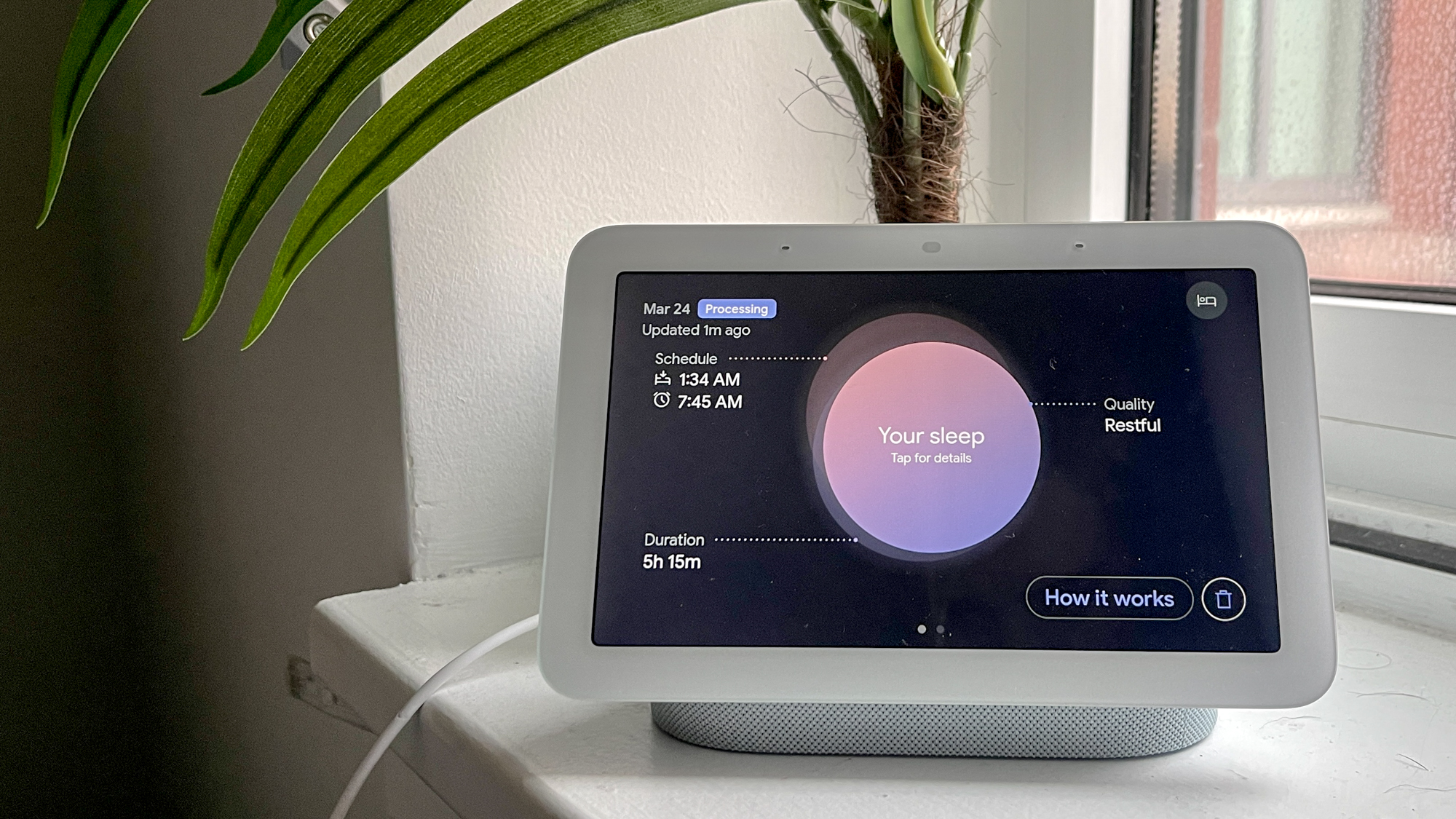
Although being “sensed” still sounds a little creepy, I forgot my display was watching me after a few days. Since my Apple Watch needs to be charged for overnight wear, I spend more time than I’d like being prepared for sleep tracking. I appreciate the invisibility of the feature on the new Google Nest Hub.
Google Nest Hub (2nd Gen) review: Other smart features
We've always liked Google's smart display UI, but the new Nest Hub revamps the interface to make controlling all the best smart home devices more intuitive. My one qualm is that the display returns to the home screen if you don’t tap on your devices fast enough, but the interface upgrade makes up for it. Of course, I could always manage my devices, as well as make voice calls, launch videos and get answers to queries by asking Google Assistant aloud, too.
On-device processing is nothing new for Google. On the Nest Audio, the built-in chip allowed for a faster assistant. On the Nest Hub, your assistant should learn your most common commands over time, as well as process the best Google Assistant commands overall, without sending data to the cloud. The added mic ( three total) should make it easier for your assistant to recognize its wake words as well. Expect speedy responses and effortless integration with your Google Maps, Google Calendar and other in-brand services.
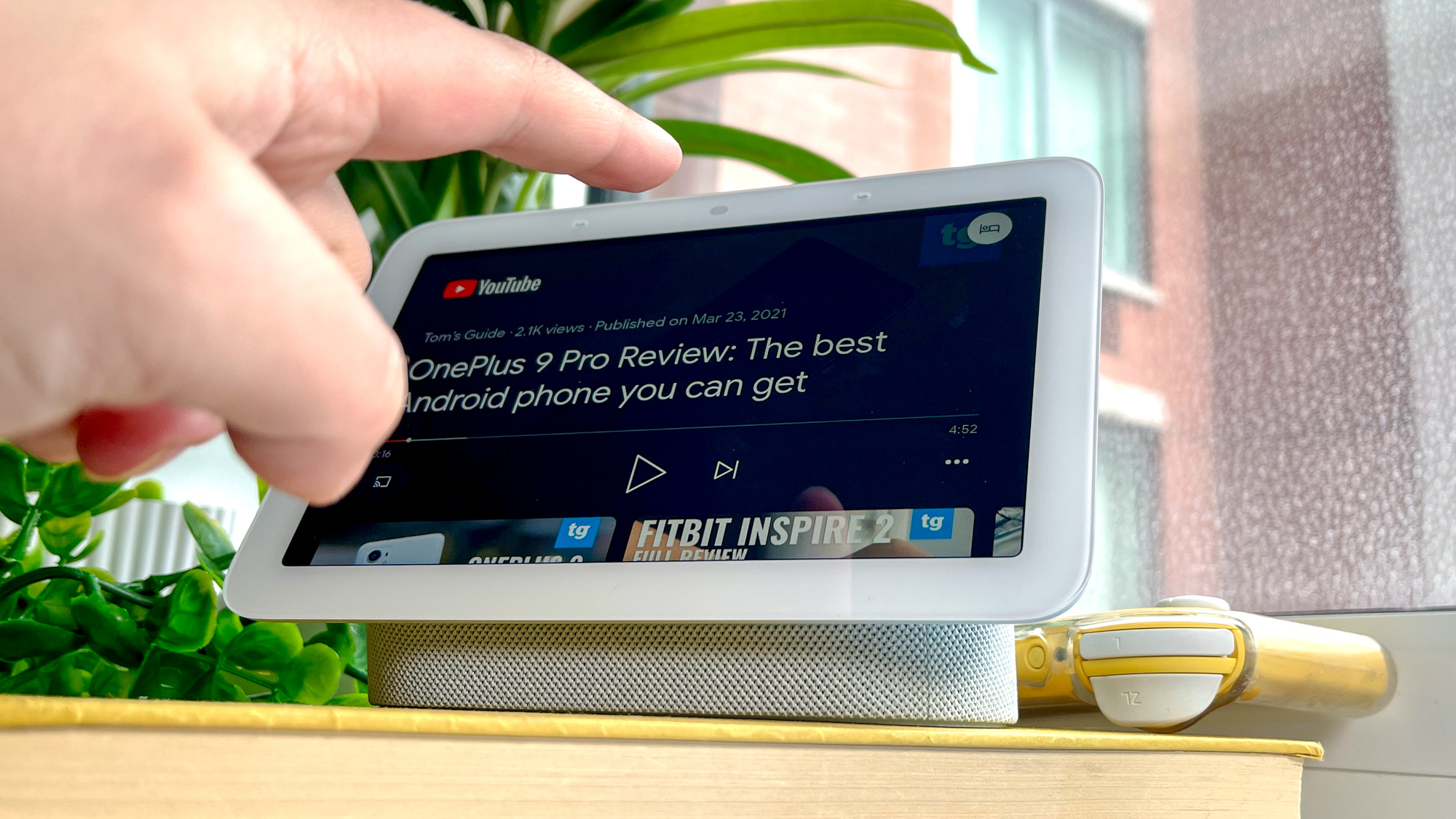
That includes YouTube, which is a key advantage Google’s displays have over Amazon’s. I can also call up any of the best Netflix shows, best Disney Plus shows and more as well. The Nest Hub Max’s larger display makes it a better vessel for watching shows, but it doesn’t offer touch gestures like the new Nest Hub. That said, I had some issues learning how to use touch gestures. You have to be fast and precise with your air tap to successfully pause or play video. You also need to be standing directly in front of the display for the tool to work. Still, I could only get them to work half the time.
The final smart home feature worth calling out is support for Thread radio. Thread is the protocol that enables future integrations across multiple smart home companies. The network isn't immensely popular right now, but more and more companies offer cross-brand compatibility. We're heading in the direction of a more unified smart home system, and the Google Nest Hub is prepared to keep up.
Google Nest Hub (2nd Gen) review: Sound quality
The Google Nest Hub (2nd Gen) isn’t the smart speaker to get for sound. Yes, it’s good for such a small display, but I wouldn’t use it for music unless it’s the only speaker in my room. I favor the Nest Hub Max, Sonos One or even my Amazon Echo Show 8.
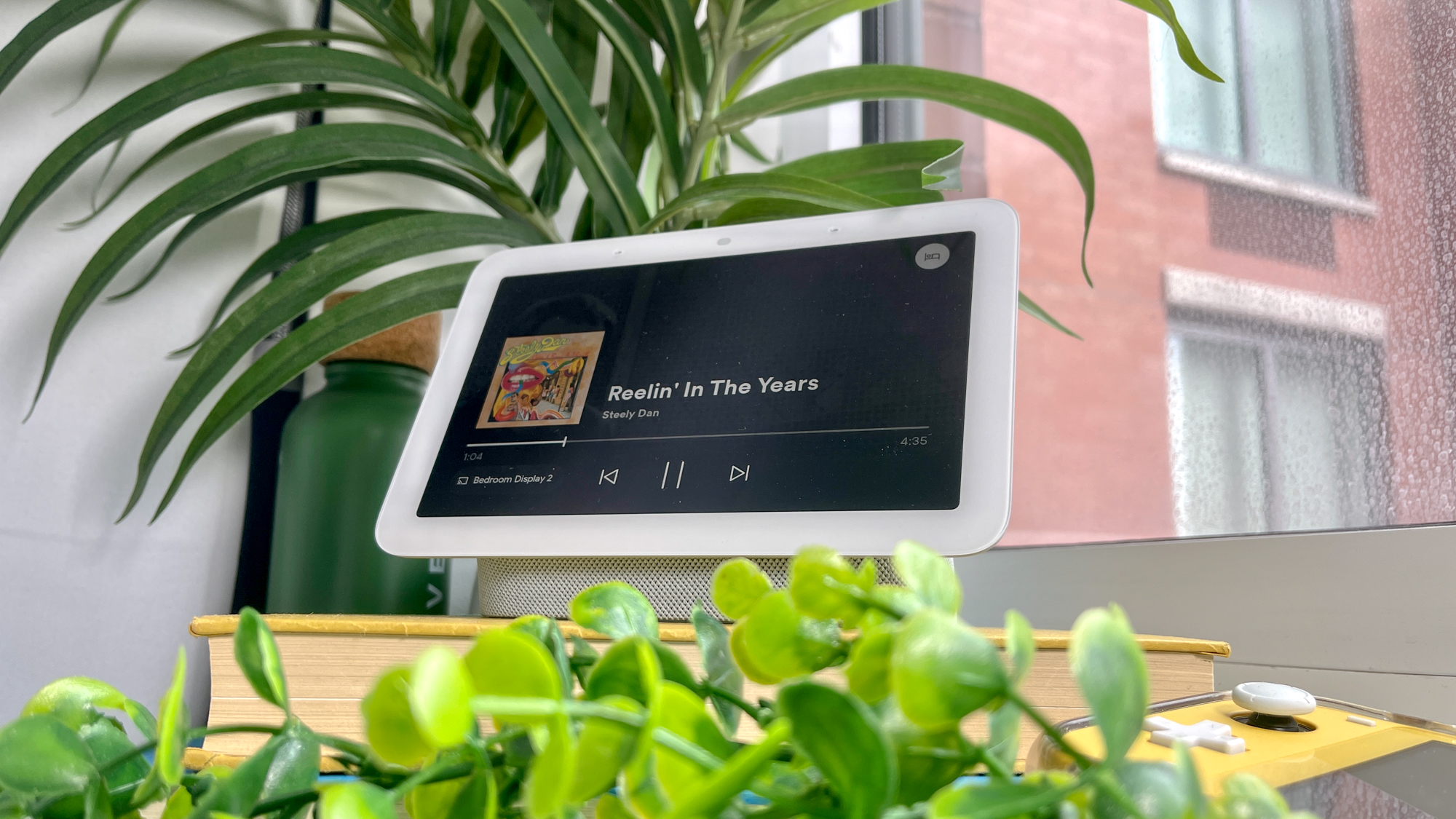
Google did boost the bass by 50% this time around, which is an improvement over the total absence of bass in the first-generation model. When I listened to “The Joker” by Steve Miller Band, I could hear the steady bass riff throughout. The vocals sounded strong at medium volume, but when I turned the tunes up, Miller’s bluesy voice started wavering.
Google Nest Hub (2nd Gen) review: Verdict
Compared to the original Nest Hub, the Google Nest Hub (2nd Gen) is a more attractive smart display in every way. The aesthetic upgrades, though minor, make it look more luxurious than the fair $99 price suggests. I already liked Google Assistant's smart display UI, but it’s somehow sharper than before. Soli’s sensing abilities, though could be improved, make sleep tracking less cumbersome than you’d expect. Even if it’s a little creepy.
I wish the speaker had more oomph, but again, you wouldn’t buy the Google Nest Hub (2nd Gen) for the sound. Instead, it’s an affordable visual and physical means for managing your smart home — and, uniquely, your sleep.
Kate Kozuch is the managing editor of social and video at Tom’s Guide. She writes about smartwatches, TVs, audio devices, and some cooking appliances, too. Kate appears on Fox News to talk tech trends and runs the Tom's Guide TikTok account, which you should be following if you don't already. When she’s not filming tech videos, you can find her taking up a new sport, mastering the NYT Crossword or channeling her inner celebrity chef.
